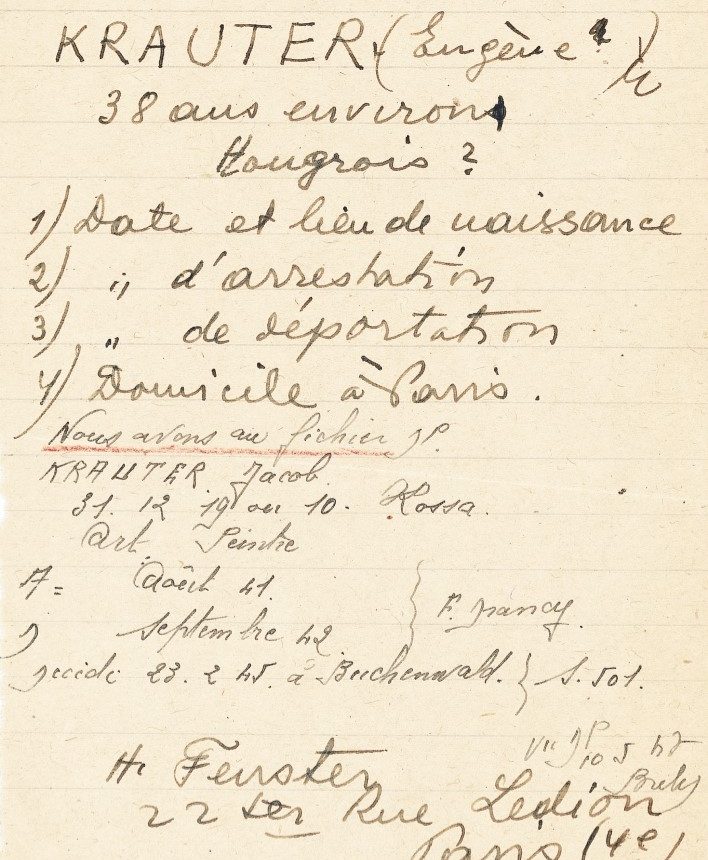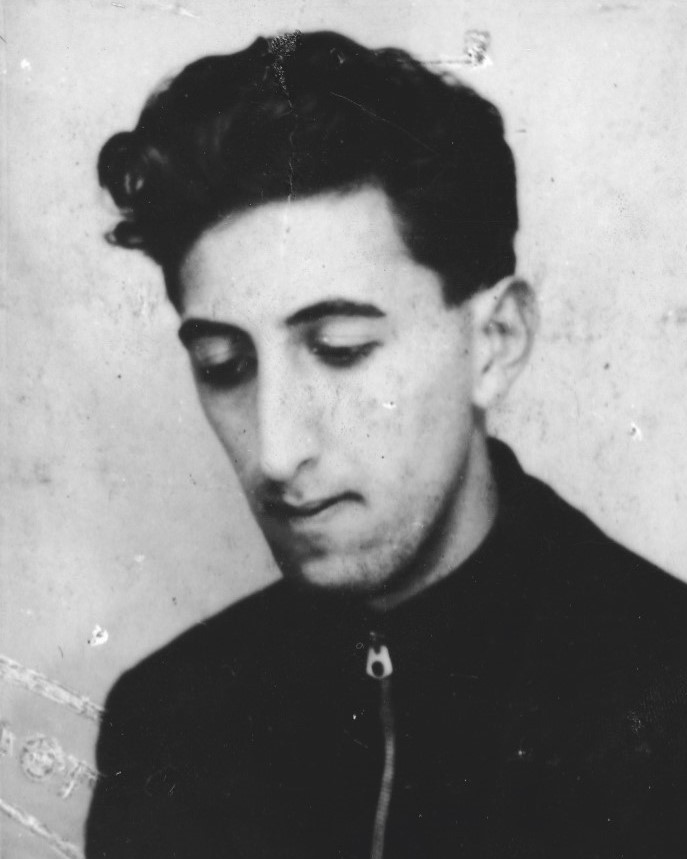Roman KRAMSZTYK
Январь 3, 2019Pinchus KRÉMÈGNE
Январь 3, 2019Якоб КРАУТеР
КОШИЦ (СЛОВАКИЯ) 1910 – ДЕПОРТИРОВАН В ОСВЕНЦИМ В 1942 Г.
Якоб Краутер вырос в ортодоксальной среде. Его семья обосновалась в Будапеште. Краутер поступил в Институт декоративных искусств, где познакомился с венгерским народным творчеством. В 1931 году приехал в Париж. Учился в акаде- мии Андре Лота, писал без устали и интересовался парижской культурной жизнью. Он постоянно совершенствовался и отказывался выставлять свои картины, так как считал, что его работы ещё не достигли зрелости. Краутер также интересовался музыкой. Когда началась война, он записался во француз- скую армию. Был демобилизован в 1940 году. Ночами он прятался у одного своего друга. Одним августовским утром 1941 года, думая, что опасность миновала, он вернулся домой, где сразу был аресто- ван. Интернирован на 14 месяцев в Дранси, где зани- мался детьми концлагеря. 11 сентября 1942 года Якоб Краутер был депорти- рован эшелоном №31. Убит в Освенциме.
Stories of Jewish Artists of the School of Paris 1905-1939
FRENCH-ENGLISH
Capitale des arts, le Paris des années 1905-1939 attire les artistes du monde entier. De cette période de foisonnement, un terme est resté, celui d'Ecole de Paris, qui recouvre une grande diversité d'expression artistique. Dans ce brassage dont Montparnasse est le creuset, un groupe se distingue : celui des artistes juifs venus de Russie, de Pologne et d'Europe centrale. Si leurs styles sont variés, un destin commun les rassemble : ils fuient l'antisémitisme de leur pays d'origine. Certains ont connu la célébrité dès les années 1920, tels Soutine, Lipchitz ou Chagall. D'autres n'ont pas eu le temps ou la chance d'y accéder. Près de la moitié a péri dans les camps de concentration nazis.
From 1905 to 1939, Paris attracted artists from all over the globe as the capital of the art world. This period of artistic proliferation became known as the School of Paris, and includes a great diversity of artistic expression. Within the teeming art world centred on Montparnasse, one group set itself apart: Jewish artists from Russia, Poland, and Central Europe. Although their styles were diverse, they shared the common fate of fleeing anti-Semitic persecutions in their home countries. Some became famous in the 1920s, such as Soutine, Lipchitz, and Chagall, while others did not have the time or the luck to gain renown. Nearly half of these artists died in Nazi concentration camps.






